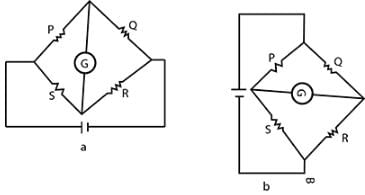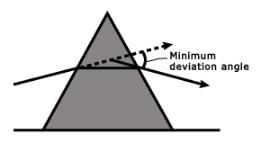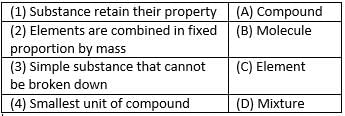OSSSC TGT Science PCM Mock Test - 8 - OTET MCQ
30 Questions MCQ Test - OSSSC TGT Science PCM Mock Test - 8
Directions: Answer the following question by selecting the most appropriate option.
Gender discrimination in a classroom
Gender discrimination in a classroom
To inspire the weak students, the teacher should:
When the position of cell and galvanometer in a Wheatstone bridge is inter-changed, its balanced condition
Two coherent sources of intensity ratio 100:1 interfere. The ratio of interference at the maxima and minima
At the minimum deviation Dm, the refracted ray inside the prism
A point source of light is placed in front of a plane mirror.
In mirrors how can we differentiate real image from the virtual image
The amplitude of the magnetic field part of a harmonic electromagnetic wave in vacuum is B0= 510 nT. Amplitude of the electric field part of the wave is
A microscope is focused on an ink mark on the top of a table. If we place a glass slab 3cm thick on it, how should the microscope be moved to focus the ink spot again? The refractive index of glass slab is 1.5 cm.
A ray of light going from denser to rarer medium suffers refraction at a concave surface. Which of the following relations is correct?
The focal length of a convex lens (refractive index = 1.5) in air is 20 cm. When immersed in water (refractive index = 1.33), its focal length will be
To which group,an element with atomic number 88 will belong?
Which of the following substances cannot be used to distinguish ethanol from ethanoic acid?
What is the chemical formula for baking soda?
A hard substance when bent produces a tinkling sound. Predict its nature.
Which of the following statement is true for colloids?
In the figure, O is the centre of eh circle and ∠AOB = 80o. The value of x is :
The true set of real values of x for which the function, f(x) = x ln x – x + 1 is positive is
The eccentricity of the hyperbola 4x2–9y2–8x = 32 is
A box contains 15 red marbles, 15 blue marbles and 30 green marbles. 5 marbles are drawn from the box, what is the probability that atleast one will be green?
The distance of a point (2, 3) from the x- axis is
The equation of the plane passing through the mid-point of the line joining the points (1, 2, 3) and (3, 4, 5) and perpendicular to it is:
If x and y are related as y – 4x = 3, then the nature of correlation between x and y is
If the area and circumference of a circle are numerically equal, then its radius is
The value of tan1°.tan2°.tan3°………. tan89° is :
The area enclosed between the curves y = √x , x = 2y+3and the x-axis is






















